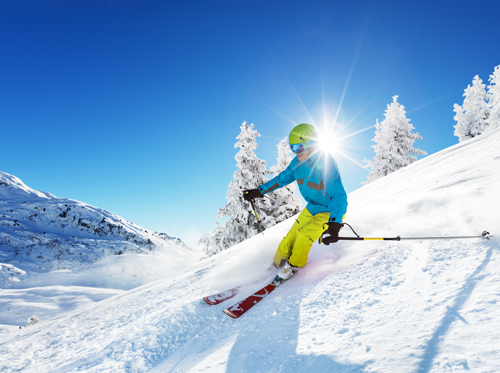
After looking forward to ski season all year, the last thing you want is to be sidelined with an injury or sore muscles due to improper fitness. Because skiing is a physically intense activity, you need to be in peak physical condition when you hit the slopes.
At least a month before you intend to strap on those skis, begin a skiing-specific training program . This can help you avoid injuries common in skiers—tendonitis, knee injuries and muscle tears—and improve your speed, agility and endurance.
We can design a personalized program for you. Good preseason ski training may include
- Strength training: Obviously the legs and trunk are key muscle groups for skiers, but do not forget to work the upper body, as well. Strong arms help keep you stabilized when navigating difficult trails. Abdominal work improves balance and protects your lower back.
- Balance-enhancing activities: Many activities enhance balance and stability—yoga, rollerblading and trampoline training, to name a few.
- Ski-specific workouts: Routines designed especially for skiers use lunges, hopping, wall holds and isometric exercises to simulate skiing posture.
- Aerobics: Along with strength and balance training (three to four times a week) and your ski-specific exercises (two to three times a week), it is beneficial to add some aerobic activity. The stronger your heart and lungs, the better your stamina and endurance for long days of black diamond runs!
When your skis finally touch the powder after months of anticipation, remember to take it easy at first . Overdo it and you might get fatigued, causing injuries from stress or carelessness. For similar reasons, always be most careful on that last run of the day. No matter how ready you are for ski season, a long day on the slopes can take a toll. December 2009
